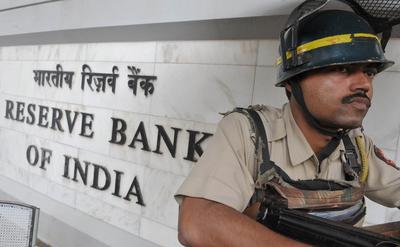During 2010–11, the Indian government was lucky to get three times more receipts from the 3G spectrum auction that it bargained for to keep up with the budgeted fiscal deficit figure of 5.5 per cent of GDP. Regardless, it is still difficult under current circumstances to follow the 13th Finance Commission’s roadmap for fiscal consolidation and keep the fiscal deficit at 4.8 per cent in the 2011–12 budget.
Given the numerous scandals and the government’s currently low approval ratings, it will be difficult for the finance minister to make tough decisions on fiscal consolidation. It is likely he will emphasise popular flagship social programs, like the National Rural Employment Guarantee Act (NREGA), the food security bill and other subsidies to petroleum products, fertilisers and the like.
The 13th Finance Commission’s recommendations to eliminate revenue deficit to make way for revenue surplus and bring down consolidated debt to 68 per cent of GDP by 2014–15 looks difficult. According to the Reserve Bank of India (RBI), high fiscal deficit leads to problems of inflation management which could slow growth — leading to further inflation, crowding out the private sector and higher interest rates.
The increasing current account deficit (almost 4 per cent of GDP) is an effect of the differential growth momentum between India and its trading partners. But there are numerous worrying elements behind India’s current account deficit. As the latest data shows, FDI in emerging countries on the whole jumped in 2010, where as in India it declined by almost one-third.
The problem of twin deficits may lead to a downgrading of India’s sovereign ratings. This would see a reversal in volatile components of capital flows putting pressure on the Indian rupee. Given the West’s slow recovery and the rise in oil prices — which constitutes the biggest component of India’s imports — current account deficit may surpass 4 per cent of GDP soon. The government has to either give subsidies to contain the prices of petroleum products or allow it to pass onto consumers. Both cases are problematic as the former adds to high subsidy, the fiscal deficit and thereby interest rates, but the latter forces the RBI to raise interest rates to moderate demand and inflation. Both will affect the industrial sector adversely through a slowdown in demand and investment in the sector.
Overall, the problem of twin deficits, as in the 1980s, is not a good sign for India, and the forthcoming budget should take steps to follow the 13th Finance Commission’s roadmap for fiscal consolidation. This may include rationalisation of expenditures, improving efficiency and delivery systems (rather than a mere increase in expenditure) and cutting down subsidies (on things like petroleum products and fertiliser). The government should also focus on revenue mobilisation by extending the tax base, particularly in services, and improving tax administration for better compliance. With the services sector comprising 58 per cent of GDP, but only contributing to one-tenth of total tax revenue (little more than 1 per cent of GDP), it is time to expand the tax net. Indirect tax reform, and reversing some of the fiscal stimulus packages for customs and import duties, would also help.
More importantly, if growth slows down it will have a negative impact on the mobilisation of revenue, leading to a still higher deficit. Continuous high fiscal deficits along with an increase in subsidies will raise revenue expenditure, forcing the government to cut essential capital expenditure in infrastructure and agriculture in the future. Reforms in India’s current subsidy regime are a must. The subsidies ought to be transparent and directly targeted, and, if possible, phased out gradually by increases in user charges. The Finance Commission’s recommendation to commit to fiscal consolidation looks distantly possible at present. But we should not repeat the mistakes of the 1990s, where fiscal improvement was brought about by cutting back capital investment (from 5.6 per cent of GDP in 1990–91 to 2.3 per cent in 2000–01).
A high fiscal deficit and an expected hike in policy rates to contain inflation would tighten money markets, and affect overall investment and growth. With the manufacturing sector already showing signs of slow down, decreases in local or foreign investment in this sector will make it especially difficult to achieve a growth rate of 9 per cent in 2011–12. One way to improve efficiency in the system is to implement wide-ranging reforms across the sectors that have slowed down in recent years. A gradual move towards outcome-based budgeting could be helpful.
Pravakar Sahoo is Associate Professor at the Institute of Economic Growth, India.

